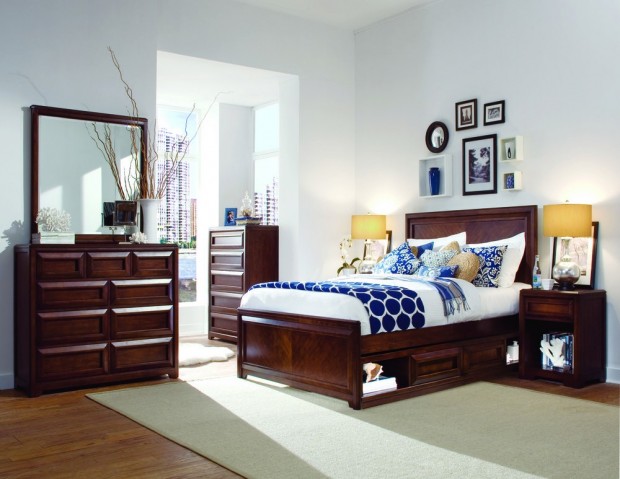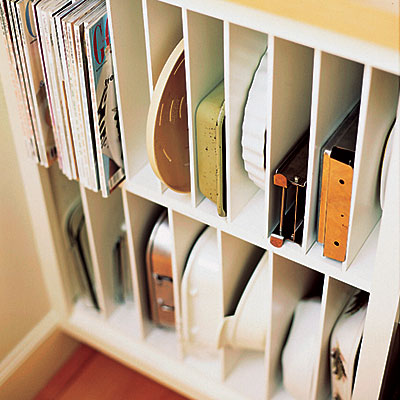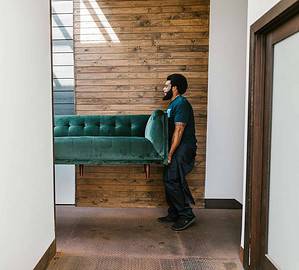Decorating a small living room is a balancing act. On the one hand, you want to showcase your furniture and décor to give your space personality. On the other, you don’t want to create a claustrophobic feeling because your furniture was too large or your décor was too loud. It is possible to create functional, stylish seating solutions for small rooms. The following are some tips for organizing a small space so you get everything you want:
Function Over Form
Before you begin decorating your small space, ask yourself what functions you want the room to perform. For example, if you want your living room to be a comfortable place for your family to play and relax, then your large and comfy sofa is perfect for the room. If you want your living room to have multiple functions, like entertaining, reading, watching television, storing toys and showcasing your style, you will need to divide the room accordingly. As a starting point, this article has some great advice for decorating small spaces that have multiple functions.
Choose Furniture with Dual-Functionality
If you decided that you want your living room to serve many purposes (as is the case with most American living rooms) then you will need to choose furniture that pulls double-duty.
Does your couch have space beneath it? Use it for storage by purchasing flat storage bins that slide beneath. Consider an ottoman over a standard coffee table because you can stylishly hide linens, pillows and blankets inside. Side tables should always have drawers for added storage capacity. The more storage you create in your space, the more room you will have for added seating.
Maybe you found the perfect couch already, but it doesn’t leave any room for storage underneath and it takes up too much space. There’s actually a service available that will customize your furniture to fit the space perfectly! The furniture doctors at Dr. Sofa specialize in furniture disassembly and reassembly, and they can shorten, reupholster and reassemble your couch so that it fits perfectly in any space, providing more room for storage elsewhere. They’ll even take it apart and put it back together if that long couch won’t fit through your door or around corners. It’s a great service if you’ve got a small move to make in an urban area.
Use All Your Available Space
If you have a sofa, chairs, an ottoman, side tables and a bookcase in your living room, you may believe that you’re using all your space, but chances are you still have plenty of available space if you look to the sky. Wall and ceiling space is often left unused, but there are plenty of creative ways to create added storage space in a small room.
Built-ins, shelves, picture frames, ceiling hooks, hanging lights – these are all great options that provide added storage in your living room, allowing you to make room for your larger furniture and create added seating without overwhelming the space.
Use Your Existing Furniture and Create Flow
If you have existing furniture and you don’t want to spend a fortune to replace it, you can utilize it in your space as long as you keep flow and storage in mind. An extra-large sofa will look cluttered if you simply throw it into the living room and decorate around it. But if you dedicate yourself to creating storage off the floor, fitting large furniture in a small space is easy. And when that doesn’t happen then hire a furniture doctor to make it work.
Creating a flow for your space requires understanding the pathways into and out of your living room. Make sure you can easily walk around the entire space and that your large furniture isn’t blocking anything like a bookcase or board games that your family will repeatedly want access to.
Use the Blueprint
Often times, a living room will have an existing blueprint, with quirky features like huge windows with under windowsill storage. Don’t work against your blueprint; use it to your advantage! If you have a dark corner of your living room going unused, throw a hanging light, two chairs and a bookcase in there and turn it into a reading nook!
If you work with your space, rather than fight against it, you will find that decorating comes naturally to you. You’d be surprised at how even large furniture can be worked into a living room if you understand your blueprint.
Seating for small living rooms is a matter of finding and creating storage, understanding the layout of your room and working with it to create a functional space. Keep in mind that you don’t have to buy new furniture if what you have is too large, since furniture professionals can help you utilize what you already own.




